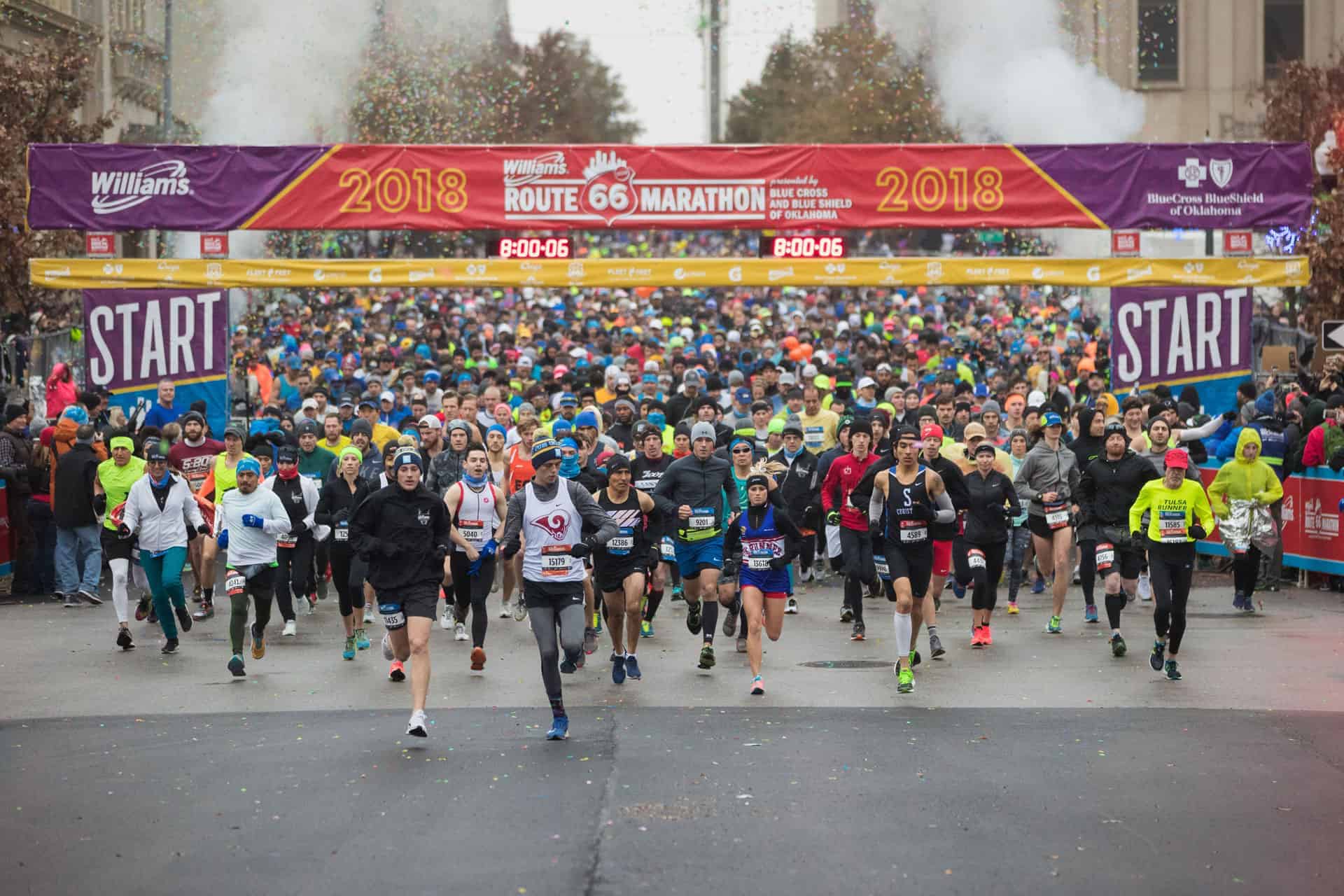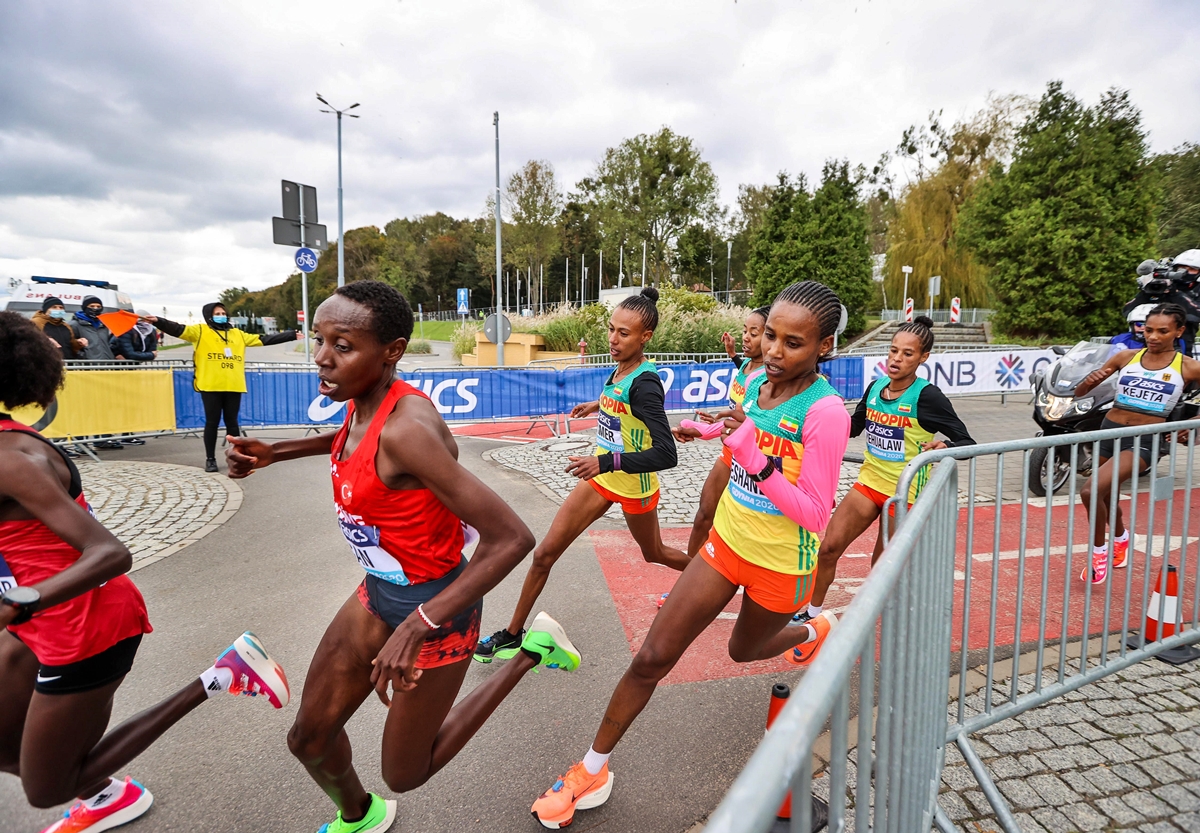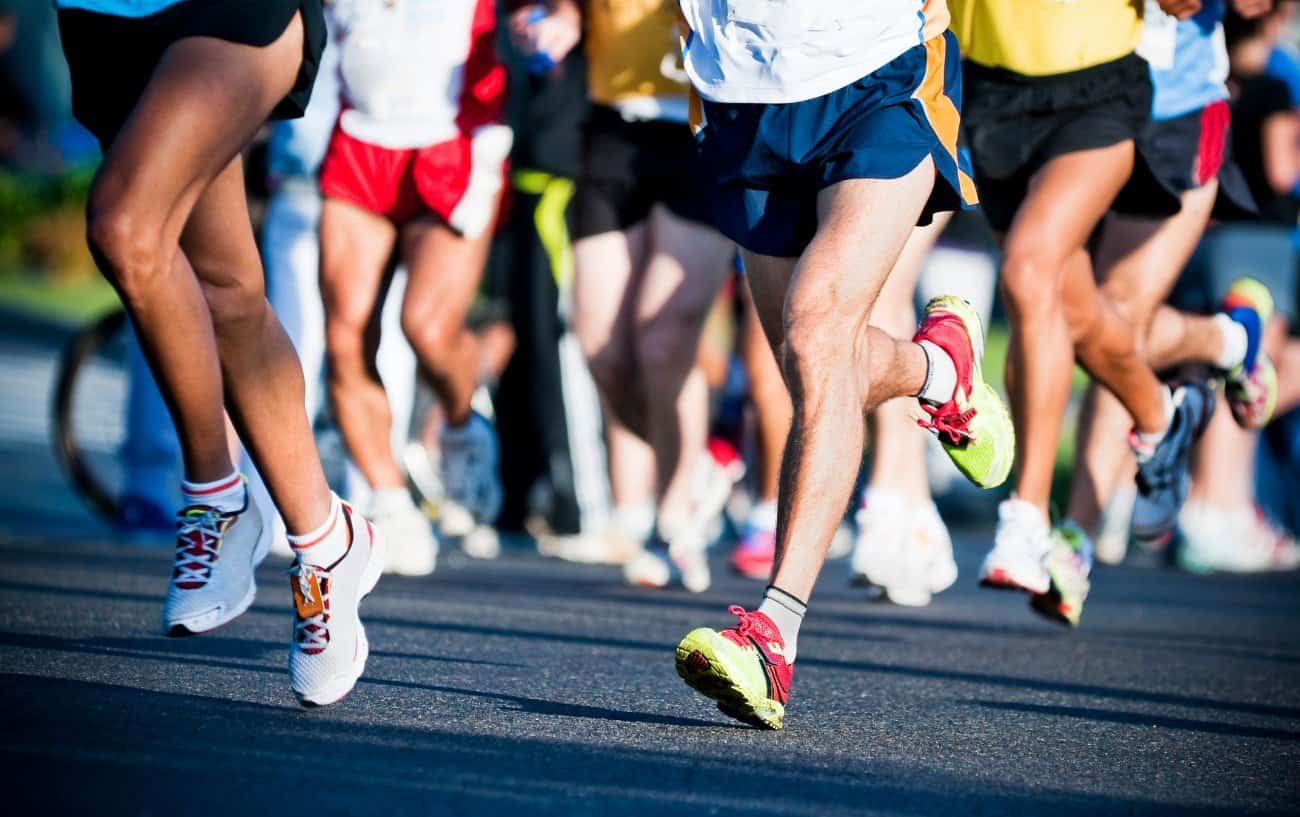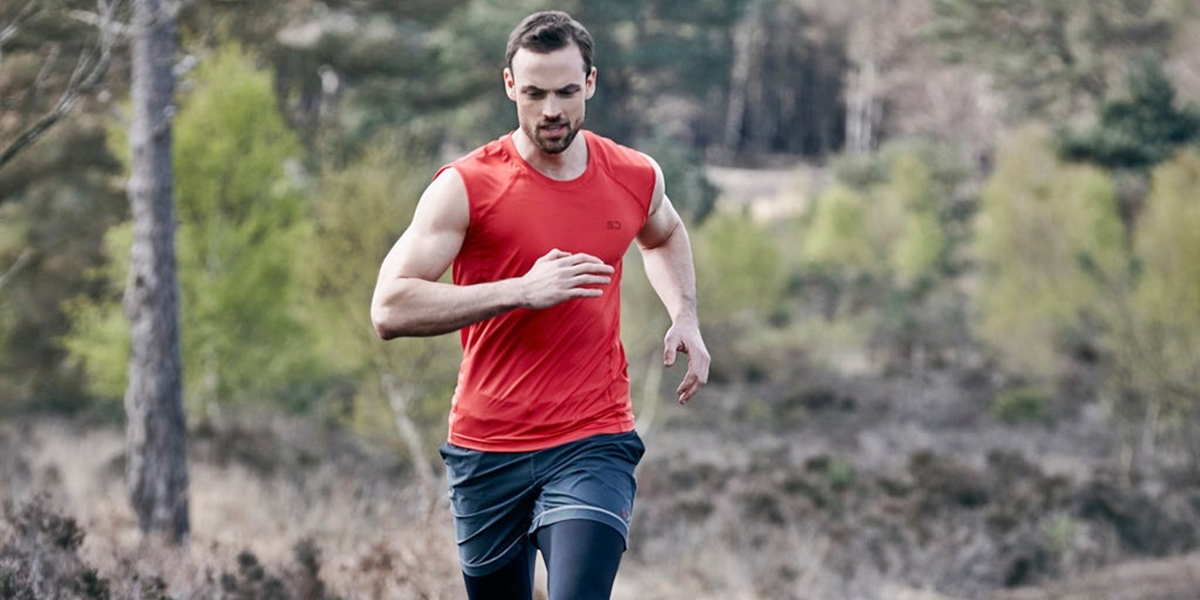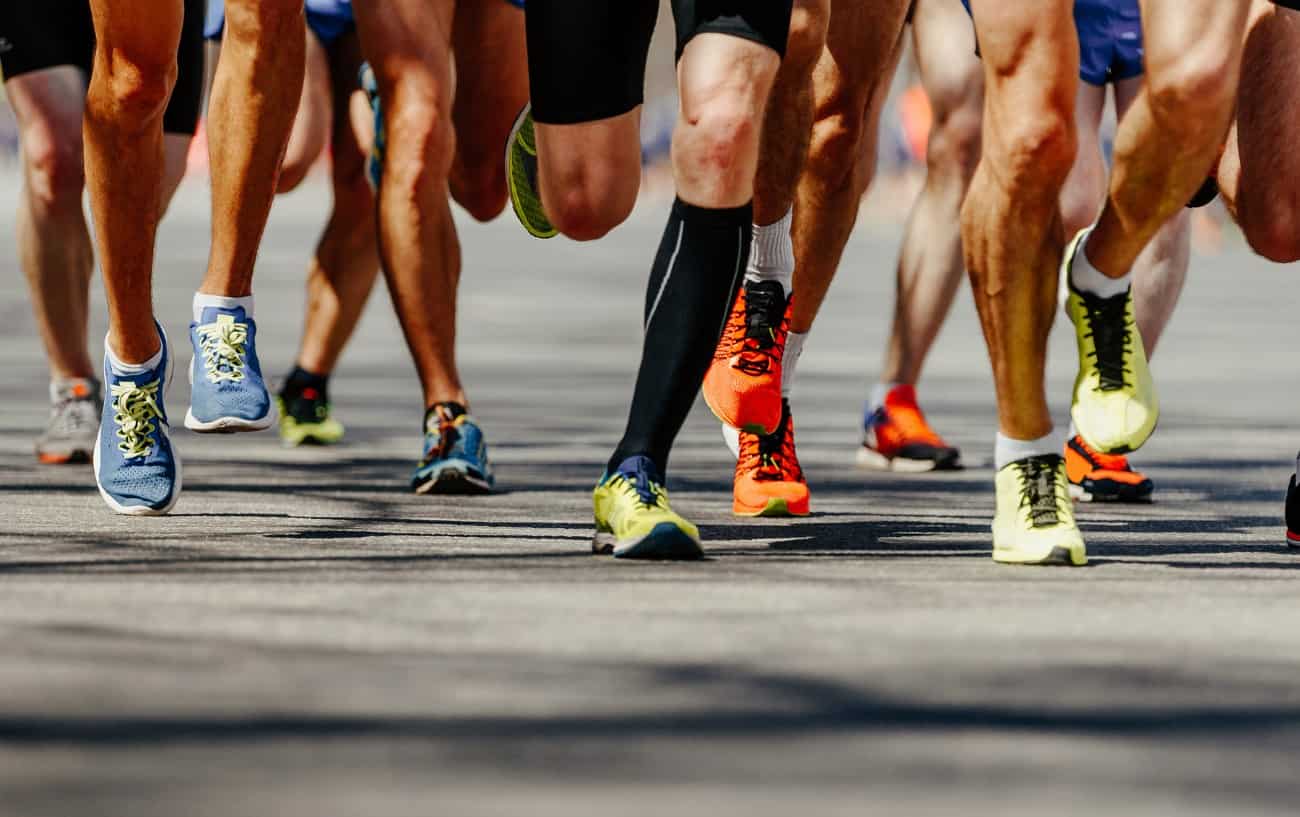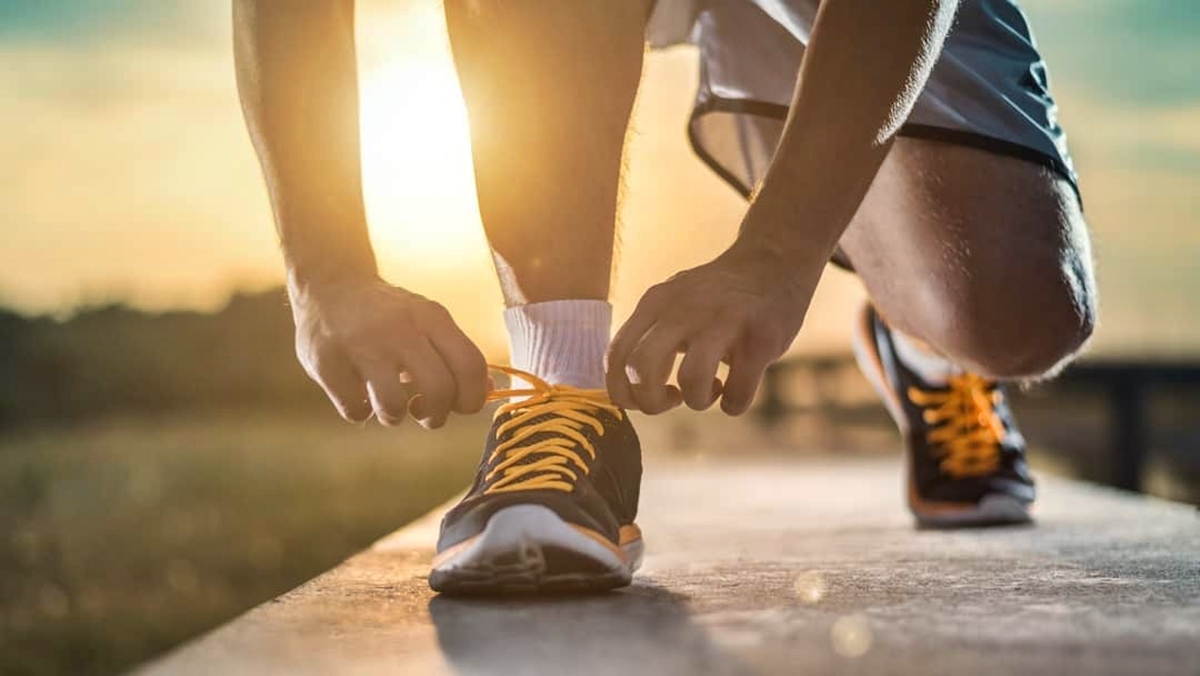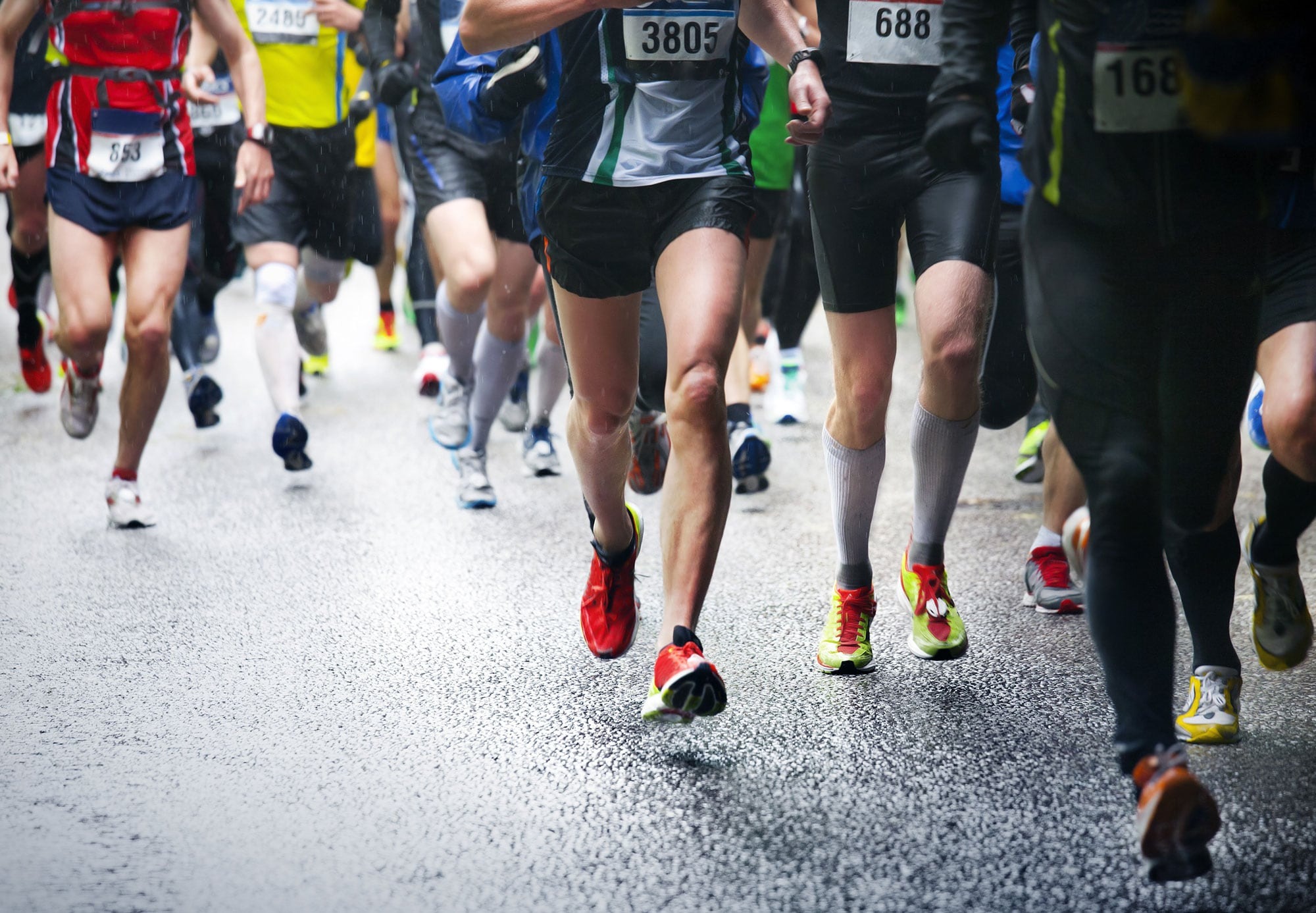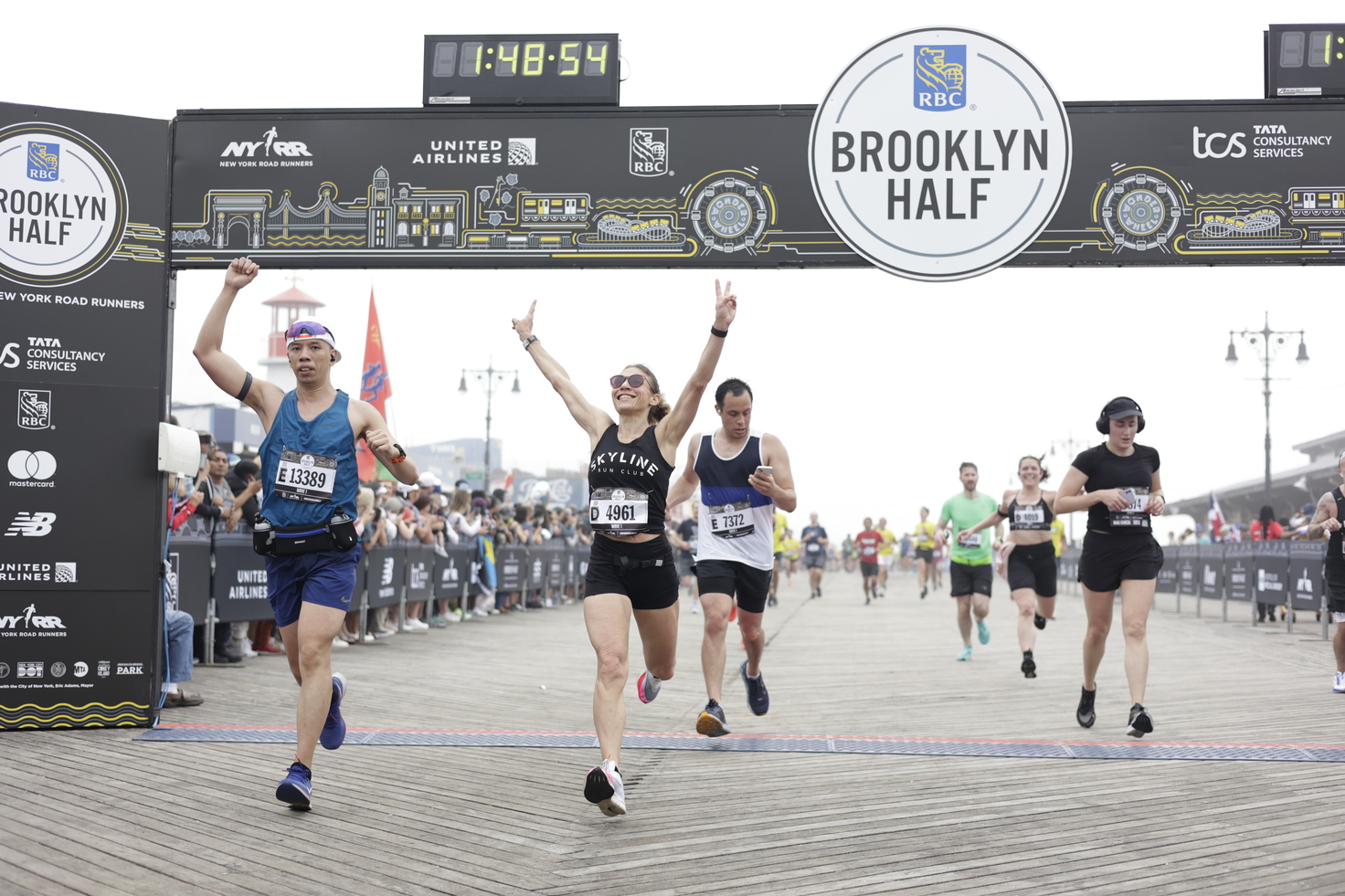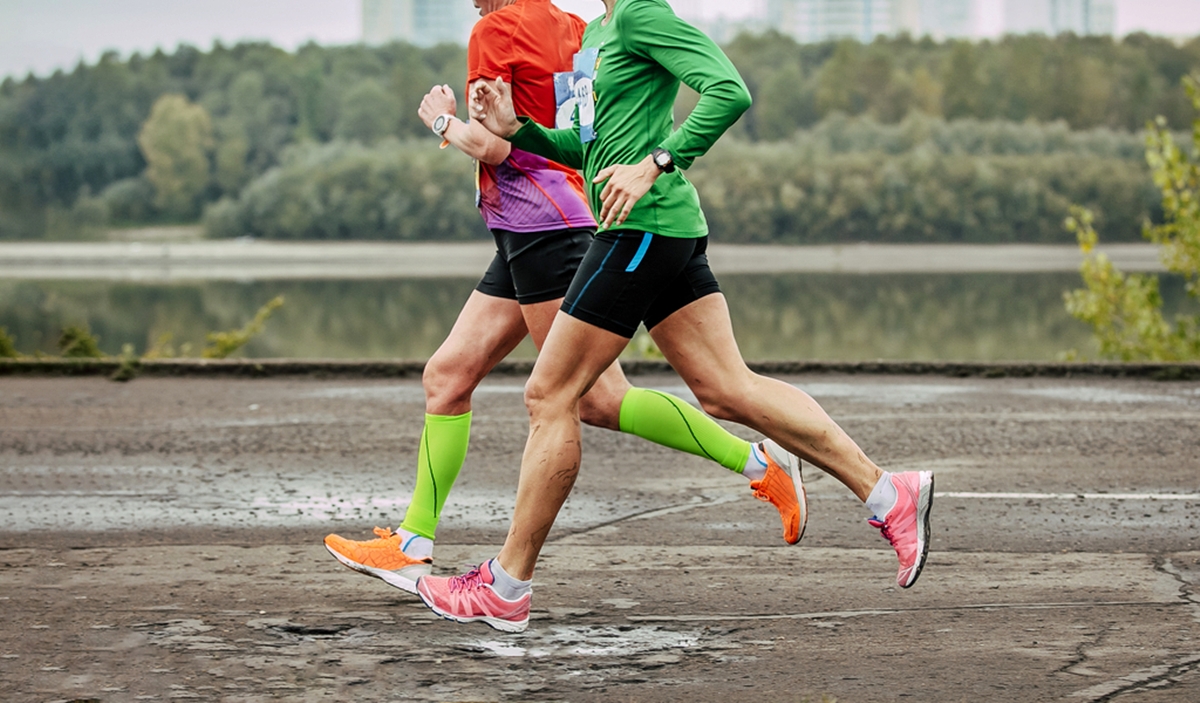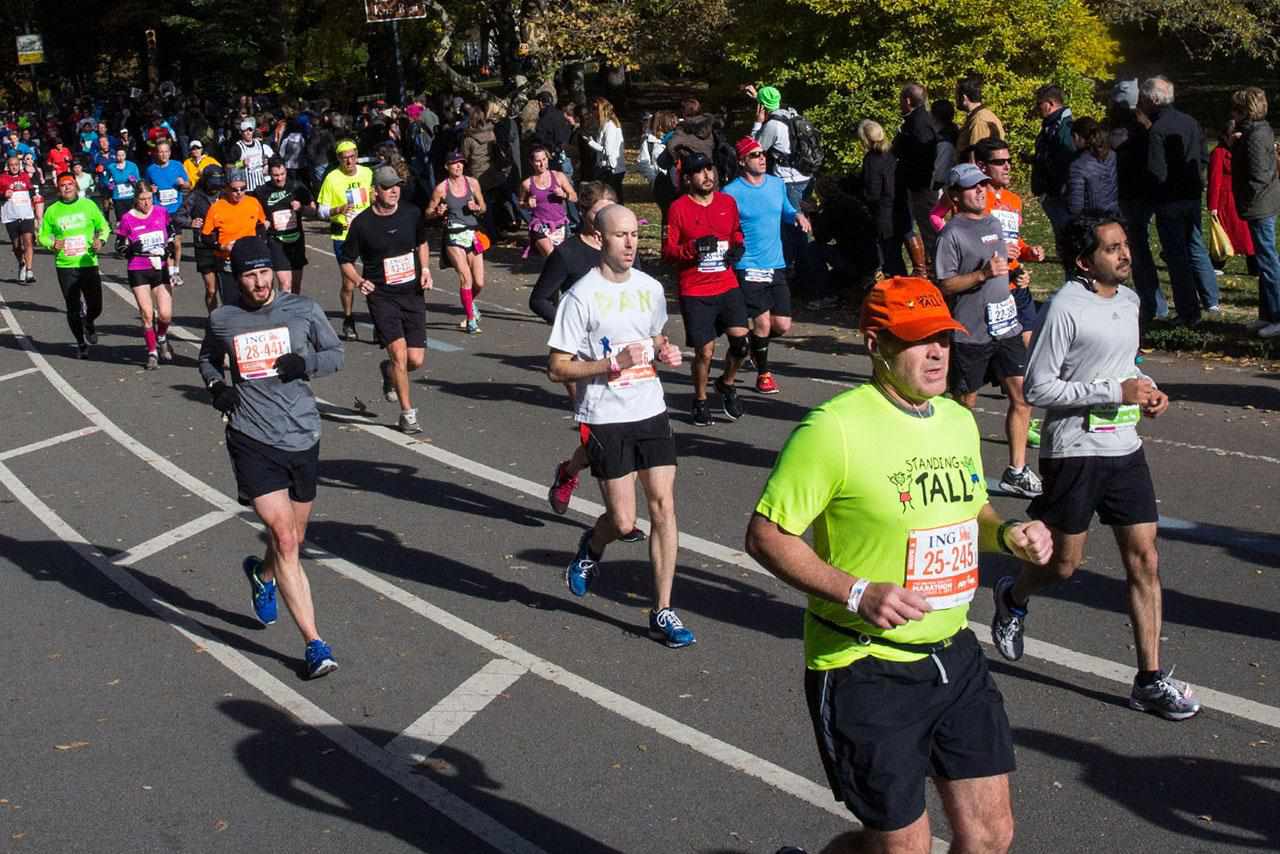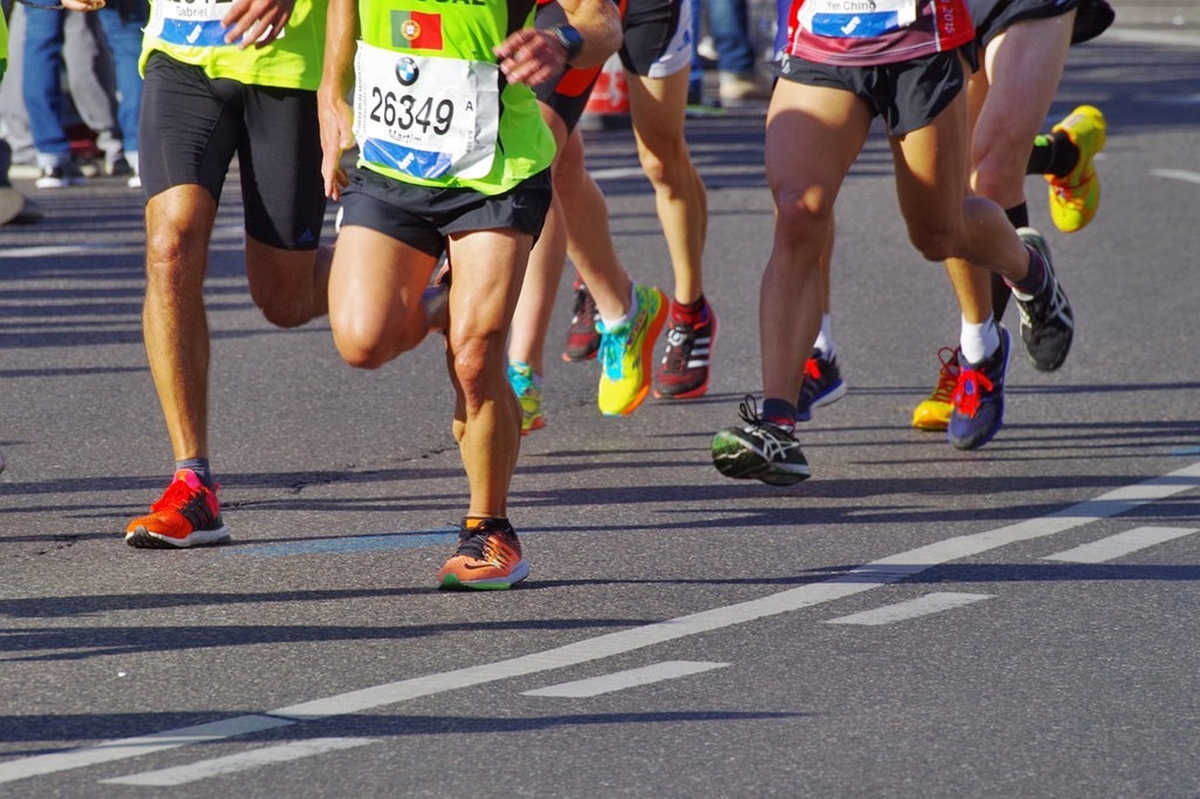

Featured
What To Wear For A Half Marathon
Modified: August 22, 2023
Discover the perfect running attire for your upcoming half marathon. Check out our featured collection and get ready to race in style.
Introduction
Preparing for a half marathon is an exhilarating and demanding journey. From training rigorously to maintaining a balanced diet, every aspect needs careful consideration. One crucial factor that often goes overlooked is choosing the right clothing for the race. Wearing appropriate attire can significantly impact your performance and overall experience during the event.
When it comes to half marathon attire, comfort, functionality, and weather-appropriateness are key. The clothes you wear should allow you to move freely, prevent chafing and discomfort, and provide adequate protection from the elements. Whether you’re a seasoned runner or a beginner, understanding the importance of proper clothing is essential to optimize your performance and enjoy the race to the fullest.
In this article, we will delve into the world of half marathon clothing and explore the factors you should consider when choosing your race day outfit. We will also provide you with a comprehensive list of must-have clothing items specifically designed to enhance your performance and comfort during the race. Additionally, we will discuss the importance of selecting the right shoes, socks, and accessories to further enhance your running experience.
So, whether you’re gearing up for your first half marathon or looking to improve your race day attire, let’s dive into the essentials of what to wear for a half marathon and ensure you’re race-ready from head to toe.
Importance of Proper Clothing
When it comes to running a half marathon, wearing the right clothing is more than just a fashion statement. It plays a crucial role in your performance, comfort, and overall experience during the race. Here are a few reasons why proper clothing is important:
Comfort: Running in uncomfortable clothing can quickly turn a challenging race into a grueling one. Properly fitted and moisture-wicking clothing will reduce friction and chafing, keeping you comfortable throughout the run.
Enhanced Performance: The right clothing can improve your performance by allowing for a full range of motion and minimizing distractions. Lightweight and breathable materials can help you maintain a steady pace without feeling weighed down.
Temperature Regulation: Half marathons can take place in various weather conditions. Wearing the appropriate clothing, such as layers for cooler temperatures or moisture-wicking materials for hot and humid conditions, can help regulate your body temperature and prevent overheating or excessive sweating.
Prevention of Chafing and Blisters: Long-distance running can lead to chafed skin and painful blisters if not properly addressed. Choosing clothing made of soft and seamless materials can minimize friction and reduce the risk of chafing. Additionally, investing in quality moisture-wicking socks can help prevent blisters by keeping your feet dry.
Visibility and Safety: Running in low-light conditions requires clothing that enhances your visibility to motorists and other runners. Opt for brightly colored or reflective clothing to ensure you’re easily spotted on the road. This is particularly important if you’re running during early morning or evening hours.
By considering these factors and investing in the right clothing, you’ll be setting yourself up for a more enjoyable and successful half marathon experience. In the following sections, we will explore the various factors to consider when selecting your race day clothing and provide you with a comprehensive list of must-have items.
Factors to Consider
Choosing the right clothing for a half marathon requires careful consideration of several factors. Here are some key factors to keep in mind when selecting your race day attire:
- Weather Conditions: The weather on race day can greatly impact your clothing choices. Consider the temperature, humidity, wind speed, and precipitation forecast. Dress in layers that can be easily shed if it gets warmer or add additional layers for cooler conditions. It’s important to strike a balance between staying warm and avoiding overheating.
- Material: Opt for moisture-wicking fabrics that can effectively pull sweat away from your body. These materials, such as polyester or nylon blends, will keep you dry and comfortable throughout the race. Avoid cotton as it retains moisture and can cause chafing.
- Fit: It’s essential to choose clothing that fits properly and allows for a full range of motion. Avoid anything too tight or restrictive, as it can hinder your performance and lead to discomfort. Look for items with stretchable and elasticized components for added flexibility.
- Visibility: If you’re running in low-light conditions or at times when visibility may be reduced, prioritize clothing with reflective elements or bright colors. This will increase your visibility to motorists and other runners, keeping you safe during the race.
- Comfort: Prioritize comfort when selecting your clothing. Opt for items with flat seams to minimize chafing, and consider the placement of pockets or storage options for carrying essentials like energy gels or your phone.
- Previous Training Experience: Consider the clothing you’ve used during your training runs. Take note of what worked well and what didn’t. Use this knowledge to guide your choices for race day attire.
By taking these factors into account, you’ll be able to choose clothing that suits the specific conditions and ensures optimal comfort and performance during your half marathon. In the next section, we will delve into the must-have clothing items for a successful race day outfit.
Top Half Marathon Clothing Must-Haves
When it comes to half marathon clothing, having the right essentials can make a significant difference in your performance and overall experience. Here are the top must-have clothing items for a successful race day outfit:
- Moisture-Wicking Shirt: Look for a lightweight shirt made of moisture-wicking material to keep you dry and comfortable throughout the race. Avoid cotton shirts as they tend to retain moisture and can cause chafing.
- Running Shorts or Leggings: Choose running shorts or leggings that offer a comfortable fit and allow for a full range of motion. Look for items with built-in moisture-wicking properties and a supportive waistband.
- Sports Bra: For female runners, a well-fitting and supportive sports bra is essential. Look for one that provides ample support during high-impact activities and has moisture-wicking capabilities.
- Running Socks: Invest in moisture-wicking running socks to keep your feet dry and reduce the risk of blisters. Look for socks with cushioning in high-impact areas and seamless construction for added comfort.
- Lightweight Jacket or Windbreaker: If you’re running in colder or unpredictable weather, consider bringing a lightweight jacket or windbreaker to provide an extra layer of warmth and protection against wind or rain.
- Running Hat or Visor: A hat or visor can shield your face from the sun and help keep sweat out of your eyes. Look for one made of breathable material and that fits comfortably on your head.
- Compression Gear: Compression gear, such as calf sleeves or compression socks, can help improve circulation and reduce muscle fatigue. Consider incorporating compression gear into your race day outfit for enhanced performance and recovery.
- Gloves and Arm Sleeves: In cooler temperatures, gloves and arm sleeves can provide additional warmth without weighing you down. Look for lightweight and breathable options that can easily be stowed away if you get too warm.
- Reflective Gear: If you’re running in low-light conditions, wear reflective gear such as a reflective vest or reflective strips on your clothing for enhanced visibility. Safety should always be a top priority on race day.
Remember, these are just the essentials, and you may find additional items that work best for you. Experiment with different combinations during your training to find what is most comfortable and suits your individual needs. In the next sections, we will discuss other essential factors to consider, such as choosing the right shoes, socks, and accessories for your half marathon.
Choosing the Right Shoes
Selecting the right shoes for your half marathon is arguably the most crucial aspect of your race day attire. The right pair of shoes can provide the necessary support, cushioning, and stability to help you perform your best and prevent injuries. Here are some factors to consider when choosing the right shoes:
- Running Shoe Type: Determine your foot type and gait to choose the appropriate running shoe type. There are three main categories: neutral, stability, and motion control. Consult with a professional or visit a specialty running store to get a gait analysis and find the shoe type that best suits your needs.
- Proper Fit: It’s essential to choose shoes that fit well. Your running shoes should have enough room in the toe box to allow for some movement while providing a secure and supportive fit around your heel and midfoot. Avoid shoes that are too loose or too tight, as they can lead to blisters, discomfort, or even foot pain.
- Sole Cushioning: Look for shoes with adequate cushioning to absorb impact and provide support during long-distance runs. The level of cushioning varies depending on personal preference and the type of running surface you’ll be on (road, trail, or track).
- Sole Grip: Consider the outsole of the shoe and choose a pair with good traction. This will ensure stability and grip when running on different surfaces, especially if you’ll encounter wet or slippery conditions during the race.
- Previous Experience and Comfort: Take into account your previous running experience and the type of shoes that have worked well for you in the past. If you’ve been using a particular brand or model without any issues, it may be wise to stick with what has proven to be comfortable and reliable.
- Budget: Set a budget for your running shoes, but keep in mind that investing in good-quality footwear is essential for your overall running experience. It’s worth spending a bit more for shoes that provide the necessary support and durability to last you through your training and the half marathon itself.
Remember to try on and test different pairs of shoes before making your final decision. Take them for a short run or jog to ensure they provide the necessary comfort and support. With the right shoes, you’ll be well on your way to a successful and injury-free half marathon. In the following sections, we will discuss other important aspects of your race day attire, such as socks and compression gear.
Socks and Compression Gear
While often overlooked, the choice of socks and the inclusion of compression gear in your race day outfit can have a significant impact on your comfort and performance during a half marathon. Here’s what you need to know when it comes to socks and compression gear:
Socks: Investing in high-quality running socks can make a world of difference in preventing blisters and keeping your feet comfortable throughout the race. Look for socks specifically designed for running, with moisture-wicking properties to keep your feet dry. Choose socks with cushioning in key areas, such as the heel and toe, to provide added comfort and support. It’s crucial to avoid cotton socks, as they can retain moisture and increase the likelihood of blisters.
Compression Gear: Compression gear, such as calf sleeves or compression socks, can offer numerous benefits for runners. Compression garments apply gentle pressure to the muscles, improving blood circulation and reducing muscle vibration. This can lead to enhanced performance, decreased muscle fatigue, and faster recovery times. Consider incorporating compression gear into your race day outfit, especially if you have experienced muscle soreness or fatigue during your training. However, it’s important to note that compression gear may not work for everyone, so it’s advisable to try them out during training runs before the race.
When choosing socks and compression gear, ensure they fit properly and are comfortable. Avoid anything too tight or restrictive, as it can restrict blood flow and potentially lead to discomfort or performance issues. Experiment with different brands and types of socks and compression gear during your training to find what works best for you.
Remember, your feet are your foundation during a half marathon, and taking care of them is crucial for a successful race. Don’t underestimate the importance of socks and compression gear in optimizing your performance and post-race recovery. In the following sections, we will discuss how to layer your clothing for different weather conditions and explore other accessories that can enhance your running experience.
Layering for Different Weather Conditions
Half marathons can take place in a variety of weather conditions, from hot and humid to chilly and rainy. Proper layering techniques can help you stay comfortable and adapt to changing weather conditions throughout the race. Here are some tips for layering your clothing:
Base Layer: The base layer is the foundation of your outfit and should be chosen based on the expected temperature. Opt for a moisture-wicking shirt that fits snugly but not too tight. This layer will help regulate your body temperature and wick away sweat to keep you dry.
Mid Layer: The mid-layer is for additional insulation and can be added or removed depending on the temperature. Choose a lightweight, breathable long-sleeved shirt or a light jacket that provides enough warmth without causing you to overheat. Consider zippered options that allow for easy ventilation.
Outer Layer: The outer layer is your protection against wind, rain, or cold temperatures. In case of rain, wear a waterproof or water-resistant jacket to stay dry. If the weather is windy, opt for a windbreaker that provides protection without compromising breathability. Look for jackets with reflective elements for added visibility.
Bottoms: For cooler weather, consider wearing a pair of running tights or leggings as a base layer. Add shorts on top for extra coverage and flexibility. This allows for easy removal of layers if you start to feel too warm during the race.
Accessories: Don’t forget to consider accessories like a running hat, gloves, or arm sleeves to protect yourself from the elements. These items can be easily removed or added as needed to regulate your body temperature throughout the race.
Layering allows you to adapt to changing weather conditions and maintain a comfortable body temperature during your half marathon. It is essential to have a flexible approach and be prepared for different scenarios. Make sure to check the weather forecast in advance and plan your layers accordingly.
Remember, it’s better to start a little bit cool and allow your body to warm up during the race. Overdressing can lead to excessive sweating, discomfort, and even heat-related illnesses. Practice layering during your training runs to find the right combination that works best for you.
In the following section, we will explore additional accessories that can provide added comfort and enhance your performance during a half marathon.
Accessories for Added Comfort and Performance
When it comes to running a half marathon, the right accessories can make a significant difference in your comfort and performance. These additional items can help you stay hydrated, carry necessary supplies, and enhance your overall running experience. Here are some essential accessories to consider:
Hydration Equipment: Staying hydrated during a half marathon is crucial. Consider carrying a handheld water bottle, a hydration belt, or a hydration pack that allows you to conveniently sip water or sports drinks during the race. Choose a method that is comfortable for you and doesn’t hinder your running motion.
Running Belt: A running belt or waist pack is a great accessory for carrying essentials like energy gels, snacks, keys, or your phone. Look for one with multiple pockets and ensure it fits securely on your waist without bouncing or causing discomfort.
GPS Watch or Running App: A GPS watch or a running app on your smartphone can provide valuable information such as distance, pace, and heart rate. This data can help you pace yourself effectively and track your progress during the race. Choose a reliable and user-friendly device that meets your needs.
Earphones or Headphones: Listening to music or podcasts can be motivating and help you maintain your rhythm during the race. Invest in comfortable and sweat-resistant earphones or headphones that won’t easily fall out while you’re running.
Sunglasses: Protect your eyes from the sun’s glare and potential debris by wearing sunglasses specifically designed for running. Look for lightweight and shatterproof options with UV protection.
Sunscreen: Apply a high SPF sunscreen before the race, especially if you’ll be running in sunny conditions. Choose a sweat-resistant and waterproof formula to ensure long-lasting protection.
Blister Prevention: To prevent blisters, consider using products like blister patches or lubricants on areas prone to friction. These can help reduce the risk of blisters and discomfort during the race.
Extra Clothing and Accessories for Post-Race: Bring a change of clothes, including a warm and dry outfit, for after the race. Don’t forget items like a comfortable hoodie or jacket, dry socks, and flip-flops to give your feet a break.
These accessories can greatly enhance your comfort, performance, and overall enjoyment during a half marathon. However, it’s important to note that some races may have specific rules or restrictions regarding the use of certain accessories, so be sure to check the race guidelines before incorporating them into your gear.
In the final section, we will provide some concluding thoughts and recommendations to tie everything together.
Final Thoughts and Recommendations
Preparing for a half marathon involves a lot of dedication and hard work, and choosing the right clothing and accessories is a crucial part of the process. By selecting the appropriate attire, you can optimize your performance, enhance your comfort, and ensure an enjoyable race day experience. Here are some final thoughts and recommendations to keep in mind:
Personalize Your Choices: Every runner is unique, so it’s important to find what works best for you. Experiment with different combinations of clothing and accessories during your training runs to determine what feels most comfortable and suits your individual needs.
Consider Weather Conditions: Check the weather forecast for race day and plan your layers accordingly. Dress in a way that allows you to adapt to different weather conditions and regulate your body temperature throughout the race.
Invest in Quality Gear: While it’s tempting to cut corners on running gear, investing in high-quality clothing and accessories will pay off in the long run. These items are designed for performance and durability, ensuring that they will last throughout your training and the race itself.
Listen to Your Body: Pay attention to any discomfort or signs of chafing during your training runs. Don’t ignore these signals, as they may indicate that adjustments need to be made to your clothing or gear to prevent issues on race day.
Practice, Practice, Practice: Use your long training runs as an opportunity to test different clothing combinations, accessories, and gear choices. This will help you fine-tune your race day attire and ensure that everything is comfortable and functional.
Check Race Guidelines: Be aware of any specific rules or restrictions regarding clothing and accessories set by the race organizers. Make sure that the items you plan to wear comply with these guidelines to avoid any issues on race day.
Remember, the right clothing and accessories can make a world of difference in your half marathon experience. Prioritize comfort, functionality, and weather-appropriateness when selecting your race day outfit. With proper attire and gear, you’ll be well-prepared to tackle your half marathon and cross the finish line with confidence.
